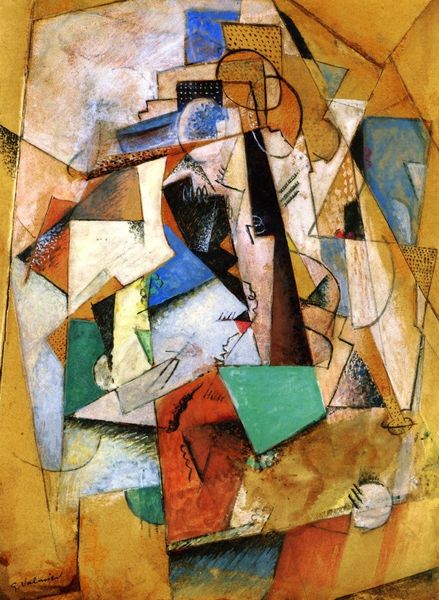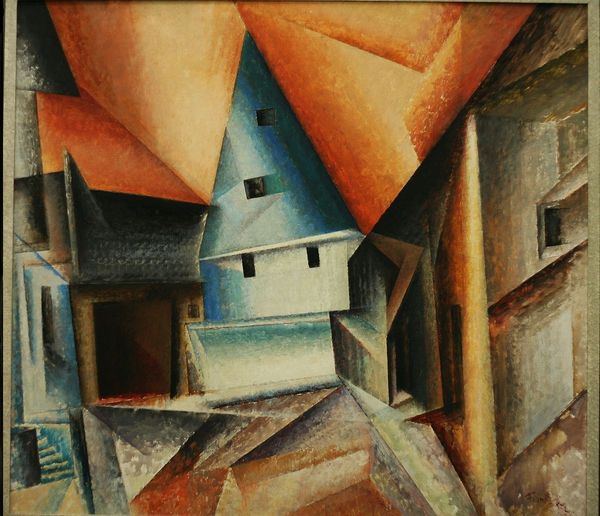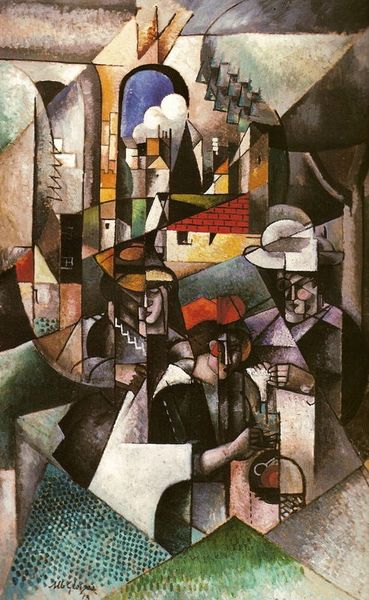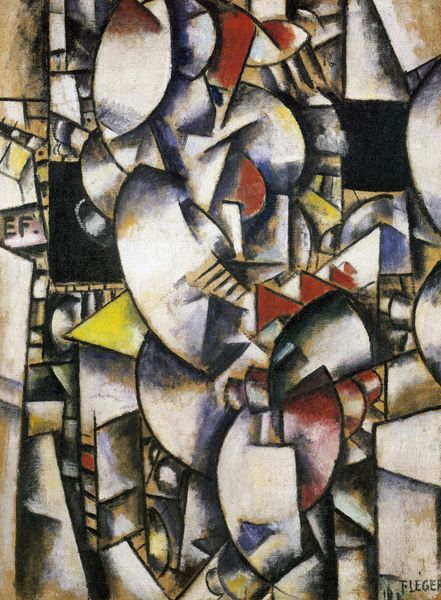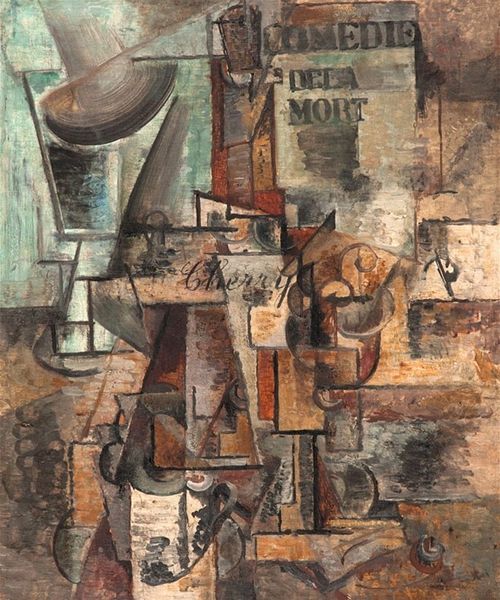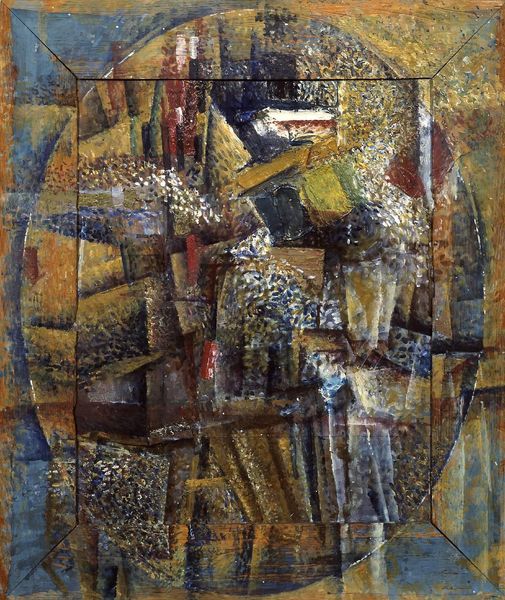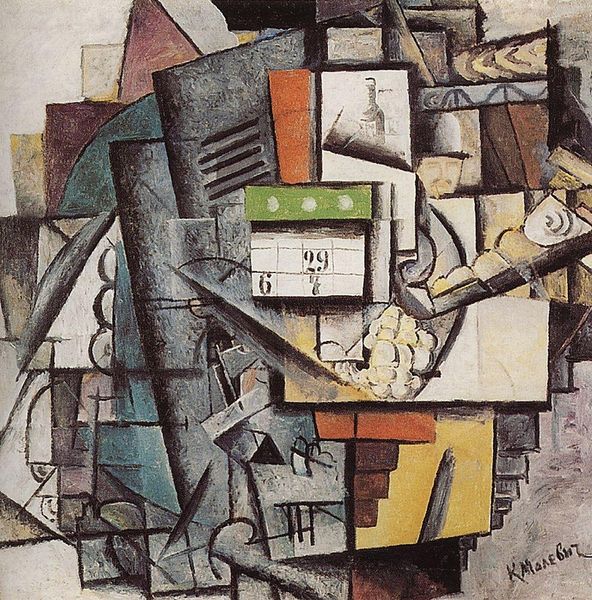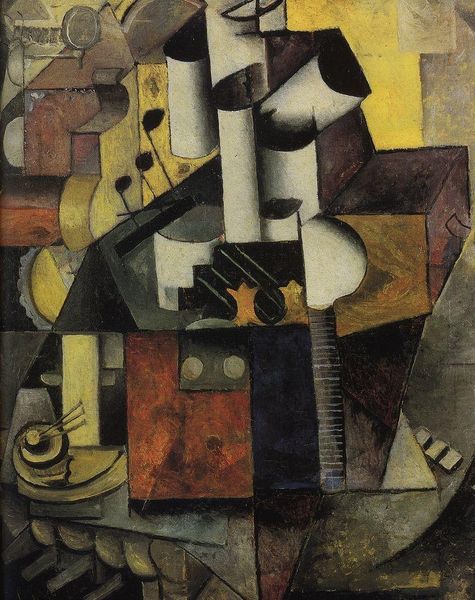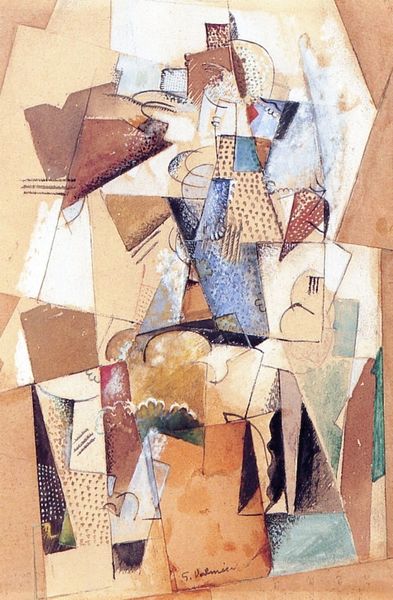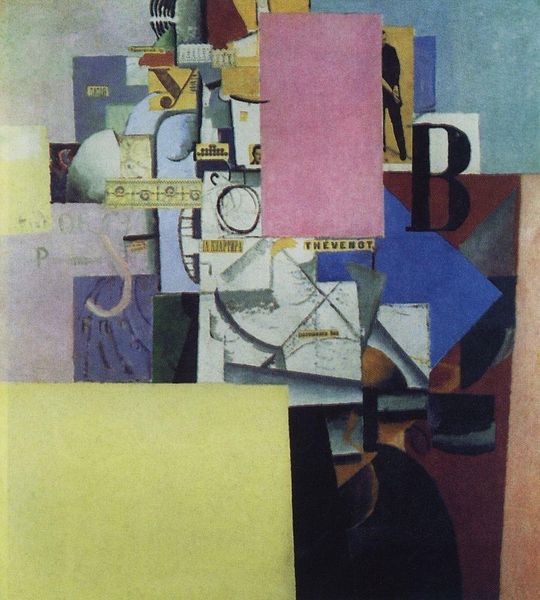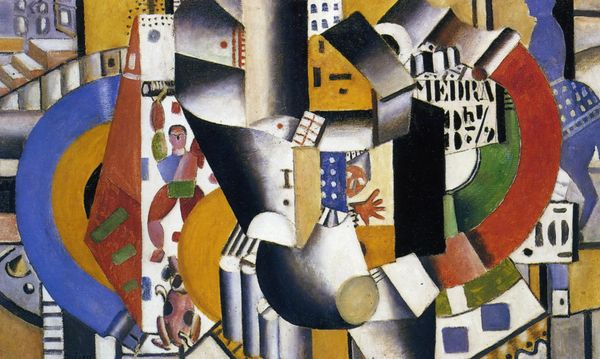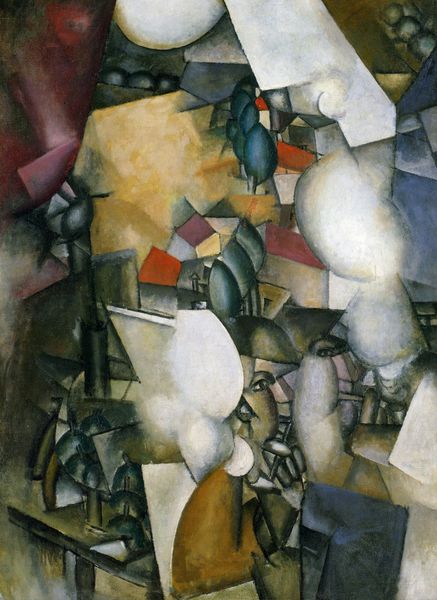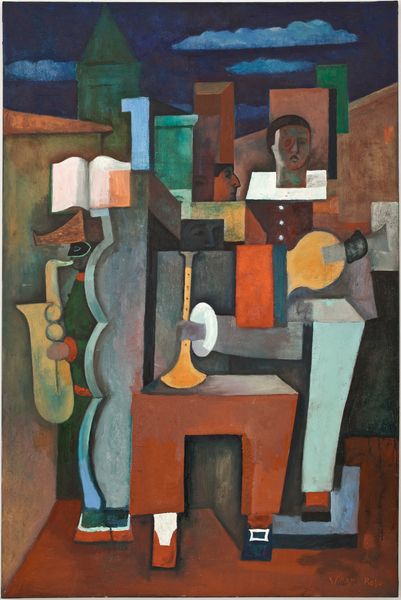
painting, watercolor
#
portrait
#
cubism
#
painting
#
oil painting
#
watercolor
#
geometric
#
cityscape
#
mixed media
#
modernism
#
watercolor
Copyright: Albert Gleizes,Fair Use
Editor: We’re looking at an "Untitled" artwork, by Albert Gleizes, potentially dating from around 1913. It seems to be executed in mixed media, perhaps watercolor and oil. I'm struck by how the artist fractured the forms. How would you approach interpreting a piece like this, given its clear Cubist influences? Curator: It is intriguing how Gleizes deploys geometric forms. Observe how he dismantles representational forms into series of intersecting planes. It is quintessential Cubism but also distinctly his own style. He focuses on rendering a subject through its essential structures. Note how these structures create new rhythms, dictating the viewing experience, almost compelling our eye to travel. What strikes you most about this structural language? Editor: The overlapping planes are confusing at first, but after a minute, I can see figures, buildings...even maybe an archway? The muted palette seems very deliberate, almost somber. I'm wondering if there's an underlying principle guiding the fragmentation of forms? Curator: Indeed, consider it through the lens of structuralism. Semiotics plays a crucial role in understanding how these broken shapes and muted tones collectively construct a symbolic language. Gleizes appears interested in creating an internal order and reality. Can you identify instances where the interplay between these planes generates a sort of visual "rhyme," echoing patterns throughout the composition? Editor: I see what you mean – the triangular shapes echo each other and reappear at various points, forming connections throughout. It makes the artwork more cohesive than I initially thought. So, it's not chaos, but order of a different kind. Curator: Precisely. This structural emphasis underscores the modernist belief in the power of form to express deeper meaning and transform perception. And in doing so, forces us to re-evaluate the traditional modes of representation. Hopefully now you will come away with a much better appreciation of its beauty and internal logic. Editor: Absolutely, seeing how the structural elements connect the work clarifies how I see it.
Comments
No comments
Be the first to comment and join the conversation on the ultimate creative platform.
